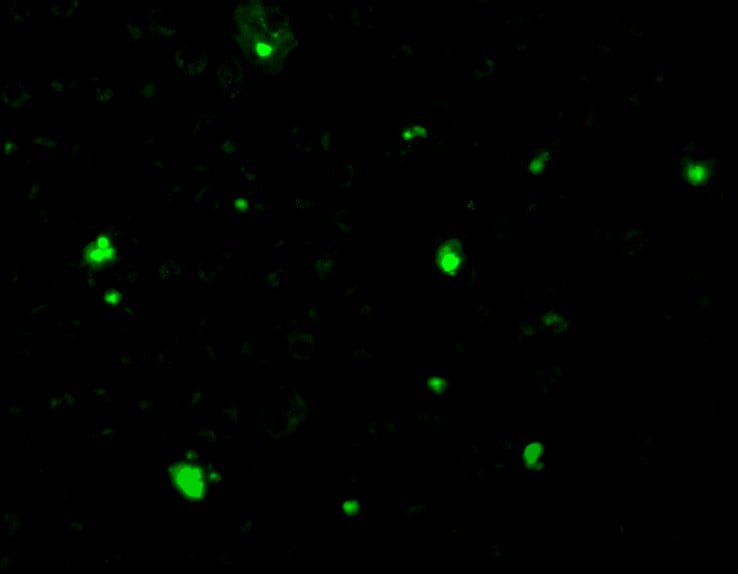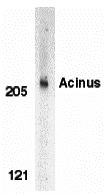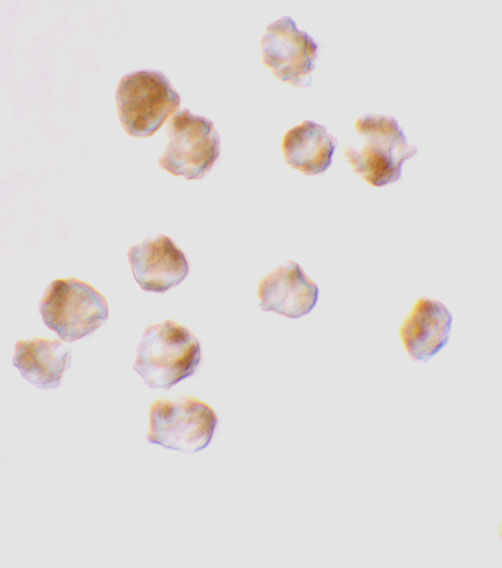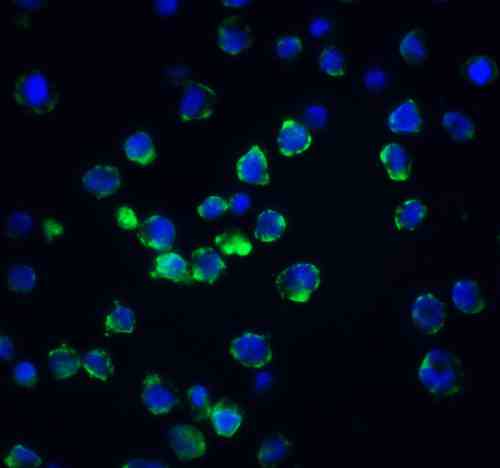| Weight | 1 lbs |
|---|---|
| Dimensions | 9 × 5 × 2 in |
| host | rabbit |
| isotype | IgG |
| clonality | polyclonal |
| concentration | 1 mg/mL |
| applications | ICC/IF, WB |
| reactivity | Acinus (CP) |
| available sizes | 100 µg |
rabbit anti-Acinus (CP) polyclonal antibody 2687
$445.00
Antibody summary
- Rabbit polyclonal to Acinus (CP)
- Suitable for: ELISA,WB,ICC,IF
- Isotype: IgG
- 100 µg
rabbit anti-Acinus (CP) polyclonal antibody 2687
| antibody |
|---|
| Tested applications WB,ICC/IF,ELISA |
| Recommended dilutions Immunoblotting: use at 1-10ug/mL Immunocytochemistry: use at 10ug/mL. These are recommended concentrations. Enduser should determine optimal concentrations for their applications. Positive control: K562 cells or whole cell lysate. |
| Immunogen Peptide corresponding to aa 1065-1080 of human AcinusL, aa 307-322 of human Acinus S and aa 338-353 of human AcinusS' which are identical to those of mouse Acinus. These sequences are located near the C-terminus of the cleaved active peptide p17. |
| Size and concentration 100µg and lot specific |
| Form liquid |
| Storage Instructions This antibody is stable for at least one (1) year at -20°C. Avoid multiple freeze-thaw cycles. |
| Storage buffer PBS, pH 7.4. |
| Purity peptide affinity purification |
| Clonality polyclonal |
| Isotype IgG |
| Compatible secondaries goat anti-rabbit IgG, H&L chain specific, peroxidase conjugated, conjugated polyclonal antibody 9512 goat anti-rabbit IgG, H&L chain specific, biotin conjugated polyclonal antibody 2079 goat anti-rabbit IgG, H&L chain specific, FITC conjugated polyclonal antibody 7863 goat anti-rabbit IgG, H&L chain specific, Cross Absorbed polyclonal antibody 2371 goat anti-rabbit IgG, H&L chain specific, biotin conjugated polyclonal antibody, crossabsorbed 1715 goat anti-rabbit IgG, H&L chain specific, FITC conjugated polyclonal antibody, crossabsorbed 1720 |
| Isotype control Rabbit polyclonal - Isotype Control |
| target relevance |
|---|
| Protein names Apoptotic chromatin condensation inducer in the nucleus (Acinus) |
| Gene names ACIN1,ACIN1 ACINUS KIAA0670 |
| Mass 151862Da |
| Function FUNCTION: Auxiliary component of the splicing-dependent multiprotein exon junction complex (EJC) deposited at splice junction on mRNAs. The EJC is a dynamic structure consisting of core proteins and several peripheral nuclear and cytoplasmic associated factors that join the complex only transiently either during EJC assembly or during subsequent mRNA metabolism. Component of the ASAP complexes which bind RNA in a sequence-independent manner and are proposed to be recruited to the EJC prior to or during the splicing process and to regulate specific excision of introns in specific transcription subsets; ACIN1 confers RNA-binding to the complex. The ASAP complex can inhibit RNA processing during in vitro splicing reactions. The ASAP complex promotes apoptosis and is disassembled after induction of apoptosis. Involved in the splicing modulation of BCL2L1/Bcl-X (and probably other apoptotic genes); specifically inhibits formation of proapoptotic isoforms such as Bcl-X(S); the activity is different from the established EJC assembly and function. Induces apoptotic chromatin condensation after activation by CASP3. Regulates cyclin A1, but not cyclin A2, expression in leukemia cells. {ECO:0000269|PubMed:10490026, ECO:0000269|PubMed:12665594, ECO:0000269|PubMed:18559500, ECO:0000269|PubMed:22203037, ECO:0000269|PubMed:22388736}. |
| Subellular location SUBCELLULAR LOCATION: Nucleus. Nucleus speckle. Nucleus, nucleoplasm. Note=Phosphorylation on Ser-1180 by SRPK2 redistributes it from the nuclear speckles to the nucleoplasm. |
| Tissues TISSUE SPECIFICITY: Ubiquitous. The Ser-1180 phosphorylated form (by SRPK2) is highly expressed and phosphorylated in patients with myeloid hematologic malignancies. |
| Structure SUBUNIT: Found in a mRNA splicing-dependent exon junction complex (EJC). Component of the heterotrimeric ASAP (apoptosis- and splicing-associated protein) complexes consisting of RNPS1, SAP18 and different isoforms of ACIN1; the association of SAP18 seems to require a preformed RNPS1:ACIN1 complex. Interacts with API5. Interacts with SRPK2 in a phosphorylation-dependent manner. {ECO:0000269|PubMed:12665594, ECO:0000269|PubMed:16314458, ECO:0000269|PubMed:18559500, ECO:0000269|PubMed:19387494, ECO:0000269|PubMed:20966198, ECO:0000269|PubMed:22388736}. |
| Post-translational modification PTM: Phosphorylation on Ser-1180 by SRPK2 up-regulates its stimulatory effect on cyclin A1. {ECO:0000269|PubMed:18559500}.; PTM: Undergoes proteolytic cleavage; the processed form is active, contrary to the uncleaved form. |
| Target Relevance information above includes information from UniProt accession: Q9UKV3 |
| The UniProt Consortium |
Data
Publications
| pmid | title | authors | citation |
|---|---|---|---|
| We haven't added any publications to our database yet. | |||
Protocols
| relevant to this product |
|---|
| Western blot IHC ICC |
Documents
| # | SDS | Certificate | |
|---|---|---|---|
| Please enter your product and batch number here to retrieve product datasheet, SDS, and QC information. | |||
Only logged in customers who have purchased this product may leave a review.















Reviews
There are no reviews yet.